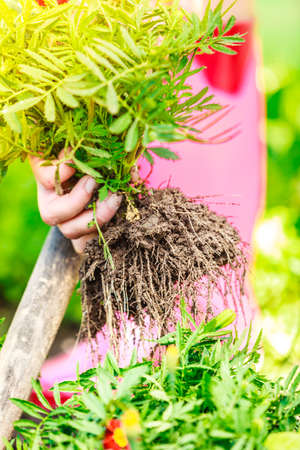Origins of the Cottage Garden
The British cottage garden, now cherished for its informal charm and riotous colour, finds its roots in the practical traditions of medieval rural Britain. In those early days, gardens were not cultivated for beauty but necessity. Peasants and villagers would utilise modest plots surrounding their cottages, growing an eclectic mix of vegetables, herbs, fruit trees, and a scattering of flowers. These small enclosures provided food, medicinal plants, and materials for everyday life—reflecting a hands-on approach to survival rather than any ornamental intent. The garden was a working space; every inch served a purpose, from nurturing onions and cabbages to cultivating calendula and lavender for both culinary and healing uses. Over time, as domestic gardening practices evolved throughout the Tudor and Elizabethan periods, these utilitarian spaces began to adopt elements of pleasure and aesthetics. Flowers like hollyhocks and foxgloves crept in among the rows of beans and leeks, offering colour as well as attracting beneficial insects. This transition laid the groundwork for what we now recognise as the cottage garden style—a distinctly British blend of practicality, resourcefulness, and natural beauty that has continued to evolve across centuries.
2. Key Design Elements and Plant Choices
The quintessential British cottage garden is celebrated for its relaxed, naturalistic charm and abundance of planting, which stands in contrast to the formality of other historic garden styles. This approach reflects the rural roots of the style, where practicality and beauty were intertwined. In this section, we examine the defining features that shape the cottage garden, with a focus on plant selection, layout, and the use of local materials.
Informal Layout
The hallmark of the cottage garden is its informal arrangement. Unlike manicured lawns and geometric parterres found in formal gardens, paths meander organically through densely planted borders. Boundaries are often softened by hedges or low stone walls, which blend seamlessly into the surrounding landscape. This informality creates a welcoming and lived-in feel, encouraging exploration and enjoyment rather than admiration from afar.
Plant Selection: A Blend of Utility and Beauty
Historically, plant choices in cottage gardens reflected both necessity and aesthetics. Flowers, herbs, vegetables, and fruit trees would be grown side by side—a practical approach for self-sufficiency. Today’s interpretations often favour traditional English perennials and annuals that offer colour throughout the seasons. Below is a summary table highlighting common plant types:
| Plant Type | Examples | Main Purpose |
|---|---|---|
| Flowers | Roses, delphiniums, foxgloves, hollyhocks | Colour & Scent |
| Herbs | Lavender, thyme, chives | Culinary & Medicinal Uses |
| Vegetables | Cabbages, runner beans, carrots | Edible Produce |
| Fruit Trees/Bushes | Apple, gooseberry, currant | Fresh Fruit Supply |
Local Materials: A Sense of Place
Authenticity in the British cottage garden is further reinforced by the use of local materials. Paths are typically constructed from gravel or reclaimed bricks; fences may be woven from willow or hazel; raised beds are edged with local stone or timber. These materials not only enhance sustainability but also root the garden firmly within its regional context.
Cultural Relevance in Modern Britain
The enduring popularity of the cottage garden style lies in its adaptability and deep connection to British heritage. Whether recreated in rural villages or small city plots, these gardens continue to evoke a sense of nostalgia and community spirit unique to the UK’s gardening tradition.

3. Evolution through the Victorian Era
The Victorian era marked a significant turning point in the evolution of the British cottage garden style. As industrialisation swept across Britain, there was a growing nostalgia for rural life and the perceived simplicity of the countryside. This cultural shift led to the adaptation and romanticisation of the cottage garden, transforming it from a practical space for growing food and medicinal herbs into an idealised symbol of rustic charm. Middle-class Victorians, influenced by writers such as William Morris and artists from the Arts and Crafts movement, began to view cottage gardens as picturesque retreats that stood in contrast to the urban sprawl. The planting schemes became more decorative, with an emphasis on informal drifts of hollyhocks, foxgloves, and delphiniums interspersed with traditional vegetables and fruit trees. Ornamental features like arched arbours, winding paths, and weathered brick walls became common elements, reflecting both a reverence for tradition and a desire for aesthetic pleasure. During this period, seed catalogues and gardening manuals proliferated, making plants and gardening knowledge more accessible to a wider public. The cottage garden’s association with sentimental ideals of home, hearth, and heritage became deeply ingrained in British culture. In essence, the Victorian reinterpretation of the cottage garden reflected changing social values—blending practicality with beauty while responding to modern anxieties by celebrating nature’s abundance within a domestic setting.
4. 20th Century Revivals and Innovations
The 20th century marked a period of renewed interest in the British cottage garden, as societal shifts and changing tastes inspired both revivals and notable innovations. As urbanisation increased, many sought solace in the nostalgic charm of rural gardens, leading to a resurgence of cottage garden aesthetics. The Arts and Crafts movement, with its emphasis on craftsmanship and harmony with nature, played a pivotal role in elevating the status of informal garden styles. Influential gardeners such as Gertrude Jekyll championed the use of colour harmonies, perennial borders, and the blending of traditional cottage plants with more structured layouts.
During this era, cottage gardens were not simply replicated from the past; instead, they were adapted to suit modern lifestyles and smaller suburban plots. Enthusiasts began incorporating native and exotic species alike, prioritising year-round interest and lower maintenance. Allotments and community gardens grew in popularity after both World Wars, further embedding the cottage garden ethos into everyday British life. Gardeners also experimented with new materials for paths and boundaries, reflecting contemporary advancements while retaining the essential informality.
Key Modifications in 20th Century Cottage Gardens
| Aspect | Traditional Approach | 20th Century Innovation |
|---|---|---|
| Plant Selection | Mainly hardy perennials and edible crops | Introduction of exotics, annuals for extended colour |
| Layout | Irregular beds and meandering paths | More defined borders; integration with lawns |
| Garden Structures | Simple picket fences and arbours | Trellises, pergolas, modern materials used for features |
| Functionality | Primarily utilitarian (food & herbs) | Aesthetic focus increases; ornamental planting favoured |
Influence on Contemporary UK Gardening Trends
The evolution of cottage gardens throughout the 20th century has left a lasting imprint on modern gardening practices across the UK. The preference for mixed planting schemes—combining flowers, shrubs, and edibles—remains prominent in private gardens today. Sustainable gardening techniques, such as composting and wildlife-friendly planting, are rooted in traditional cottage approaches but have been embraced with renewed vigour amid contemporary environmental concerns. Moreover, the relaxed style of cottage gardens continues to offer an appealing counterpoint to formal landscaping, inspiring urban gardeners to create welcoming spaces rich in biodiversity and seasonal interest.
5. The Contemporary British Cottage Garden
Today, the British cottage garden has evolved into a living expression of both tradition and modern values. While it retains its romantic charm and informal planting style, contemporary interpretations are shaped by pressing concerns such as sustainability, biodiversity, and regional identity.
Sustainability at the Heart
Modern cottage gardeners are increasingly mindful of their environmental impact. This means an emphasis on organic gardening methods, reducing reliance on chemicals, and choosing native or well-adapted plants that thrive without excessive watering or fertilisers. Composting, rainwater harvesting, and peat-free soils have become standard practices, echoing the frugality and resourcefulness of early cottage gardeners but with a distinctly 21st-century awareness.
Championing Biodiversity
The contemporary cottage garden is more than just a pretty space; it is designed to support local wildlife. Pollinator-friendly flowers such as foxgloves, alliums, and open-centred roses are planted alongside traditional favourites. Hedges and wild corners are left for birds and insects. The move towards mixed planting—including vegetables, herbs, and fruit bushes—creates habitats and food sources for a diverse range of creatures, reflecting a broader ecological consciousness in British gardening culture.
Regional Nuances Across the UK
While the core principles remain, regional differences add unique flavours to the modern cottage garden style across England, Scotland, Wales, and Northern Ireland. In the Cotswolds, honey-coloured stone walls and lush borders dominate; in Yorkshire or Cumbria, hardy perennials withstand harsher climates; Welsh gardens may weave in native ferns and damp-loving plants; while Scottish cottage gardens often embrace rhododendrons and heathers suited to acidic soils. Local materials—stone paths, reclaimed bricks, rustic timber—are commonly used to anchor each garden in its landscape.
The Enduring Allure
Despite these adaptations, the essence of the cottage garden endures: a celebration of abundance, informality, and personal expression. Today’s gardeners continue to reinterpret this beloved style—balancing nostalgia with innovation—to create spaces that are both beautiful refuges and vital contributors to the health of Britain’s natural environment.


